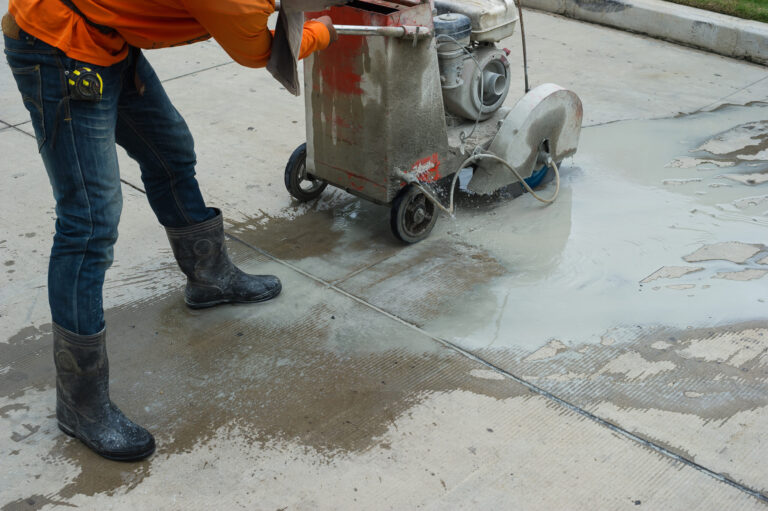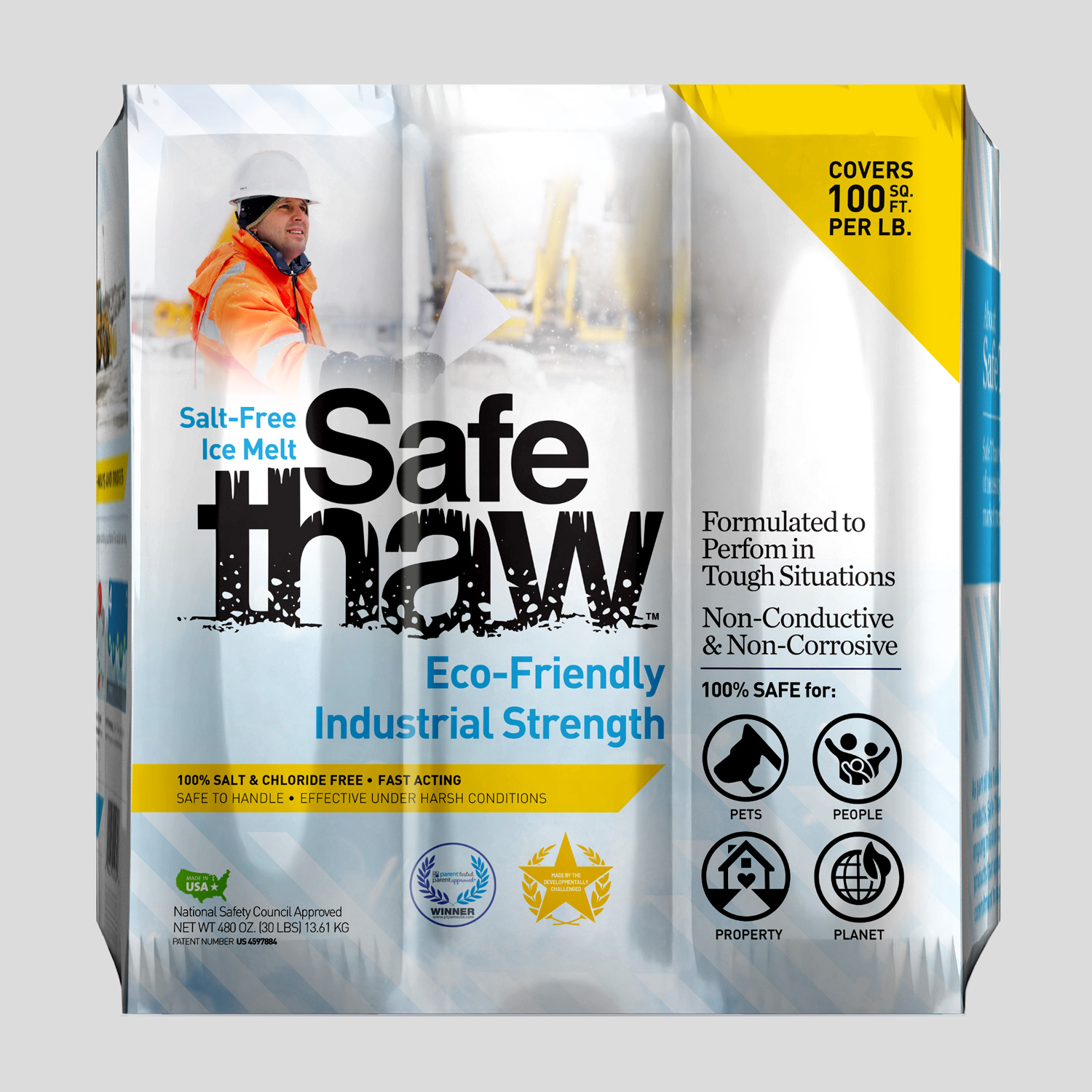Ice Evaporation: Duration For Dry Ice To Melt

Dry ice, unlike the typical ice made from water, is the solid form of carbon dioxide. It has fascinated people for decades due to its chilly -78.5°C (-109.3°F) temperature and its propensity to “vanish” into a misty cloud instead of turning into liquid. This peculiar behavior leads many to ask the question, “how long does it take for dry ice to melt?” Understanding the science behind dry ice and its sublimation process is not only fascinating but practical.

Safe Thaw
Safe Thaw was created as the ice management solution for tough winter environments. Ideal in commercial and industrial properties, shops, government agencies, bridges, and construction.
Understanding Dry Ice And Sublimation
Before we delve into the specifics of dry ice’s duration to melt, or rather “sublimate,” it’s important to grasp what makes it different from regular ice.
When exposed to room temperature, dry ice doesn’t melt in the conventional sense. Instead, it undergoes a process called sublimation, where it directly transitions from a solid to a gas. This is why you never see a puddle of liquid around dry ice; it turns into carbon dioxide gas.
Factors Influencing Sublimation Time
The exact answer to “how long does it take for dry ice to melt” isn’t straightforward. Various factors determine the speed at which dry ice sublimates, including:
- Surface Area Exposure: A larger chunk of dry ice will take longer to sublimate than smaller pieces or pellets exposed to the same conditions.
- Temperature: Naturally, in warmer temperatures, dry ice will sublimate faster. In a typical room temperature setting, a pound of dry ice could sublimate completely in three to six hours. However, in a cooler setting, it might take much longer.
- Air Circulation: An area with more airflow will speed up the sublimation process. For example, dry ice left outside where there’s a breeze will vanish quicker than in a closed room.
- Insulation: If dry ice is stored inside an insulated container, it will last longer. Proper storage can prolong the life of dry ice for a few days.
Safety Precautions When Handling Dry Ice
Due to its extremely cold temperature and the fact that it turns into carbon dioxide gas, there are some safety measures to consider:
- Avoid Direct Contact: Dry ice can cause frostbite upon direct contact with skin. Always use gloves or tongs when handling it.
- Store in Ventilated Areas: As dry ice sublimates, it releases carbon dioxide gas. This can lead to a dangerous buildup in closed spaces. Ensure the area is well-ventilated.
- Do Not Consume: Ingesting dry ice can cause severe internal injury.
Disposing Of Dry Ice Safely
The matter of disposing of dry ice can sometimes be a dilemma, especially if you’re unfamiliar with its properties. Here’s a safe approach:
- Let It Sublimate: The easiest way to dispose of dry ice is to let it sublimate in a well-ventilated space. This way, it will naturally turn into carbon dioxide gas and dissipate.
- Avoid Flushing: Never try to flush dry ice down a sink or toilet. The extreme cold can damage your plumbing.
- Outdoor Disposal: If you’re disposing of large quantities, it’s best to do it outdoors to avoid the risk of carbon dioxide buildup in enclosed spaces.
A Winter Tip: Keeping Your Driveway Safe
While dry ice and its sublimation are intriguing, winter ice presents its own challenges. Slippery driveways and walkways can pose a risk during the cold months. Using a chemical and toxin-free, industrial-use ice melt like Safe Thaw ensures safety. Its granular formula effectively melts the ice without causing harm to the environment or concrete surfaces. A perfect solution for a slip-free winter.
How Long Will Dry Ice Last in Water?
Once you’ve seen dry ice at room temperature, the next question people often ask is, “what happens if I put it in water?” The answer is—it sublimates much faster. When submerged, dry ice reacts immediately with the warmer temperature of water, creating that thick fog effect people love at parties. But it’s short-lived.
So how long will dry ice last in water? Not long at all. A block that may have lasted three to six hours in a cooler could be gone in less than 15 to 20 minutes when placed in a bucket of warm water. Even in cold water, the process accelerates compared to air exposure. That’s why entertainers or event organizers keep adding fresh dry ice during the evening to maintain the smoky effect.
And while it’s fascinating to watch, remember—carbon dioxide gas is being released rapidly. You don’t want to do this in a closed space. Always ensure there’s ventilation, or better yet, stick to outdoor demonstrations.
How Long Does Dry Ice Smoke Last?
That dramatic fog effect is what makes dry ice so popular, but it’s easy to overestimate its staying power. How long does dry ice smoke last really depends on two things: water temperature and the size of the dry ice piece. The hotter the water, the bigger and denser the fog cloud—but the faster your dry ice vanishes. In very warm water, the smoke might only last 5 to 10 minutes per chunk.
If you want it to linger, cooler water slows down the sublimation. This way, you get a thinner but longer-lasting smoke effect, maybe 20 to 30 minutes per block. That’s why stage designers often switch between hot and cool water setups depending on whether they need an explosive fog burst or a steady background haze.
The takeaway? You can’t stretch smoke for hours on end. If you need a longer performance, you’ll have to keep feeding in new pieces of dry ice.
How to Make Dry Ice at Home: Is It Worth It?
Curiosity often leads people to wonder, “can I make dry ice myself?” Technically, yes—you can produce it by releasing compressed liquid carbon dioxide into a bag or container, where it instantly freezes into dry ice snow. But here’s the catch: you need specialized equipment like a CO₂ fire extinguisher or pressurized tank, and you have to handle it extremely carefully.
So while you can explore how to make dry ice at home, most experts don’t recommend it unless you’re doing it as a supervised science project with proper safety gear. Dry ice is powerful, and mishandling it can lead to burns or dangerous gas buildup. It’s usually safer, cheaper, and more reliable to buy it from a supplier than trying to whip it up in your garage.
How Long Does Dry Ice Stay Cold For?
This is where practical use comes in. Campers, shippers, and even grocery stores often ask: “how long does dry ice stay cold for?”
In a standard insulated cooler, 10 pounds of dry ice can keep items frozen for 24 to 48 hours. If you’re storing it in a deep freezer or specialized container, you can stretch that timeline even longer. But outside a cooler, left in a room, that same block may vanish within hours.
It’s important to note that dry ice doesn’t just “stay cold”—it’s actively releasing carbon dioxide as it sublimates, which means the cooling effect is consistent until it’s gone. For transport, it’s ideal because unlike water ice, it doesn’t leave messy puddles behind. Still, the key is insulation: the better the container, the longer your dry ice will last.
The Winter Connection: Dry Ice vs. Household Ice Melt
It’s tempting to draw parallels between dry ice and ice melts because both involve battling frozen surfaces. But their purposes are entirely different. Dry ice is used for cooling and special effects, not for safety on driveways or rooftops. In fact, placing dry ice directly on concrete could cause cracking due to the thermal shock.
That’s where products like Safe Thaw stand apart. While dry ice fascinates with its fog and cold storage uses, Safe Thaw addresses the real daily problem of slippery surfaces in winter. Unlike calcium chloride or sodium chloride products that harm cement, Safe Thaw works without damaging driveways, decks, or roofs—and it’s safe around kids, pets, and vegetation.
Industrial facilities, commercial complexes, and homeowners alike lean on Safe Thaw because it solves a different problem: not preserving goods or entertaining guests, but keeping people safe from slips and falls while protecting property.
100% salt & chloride-free, fast acting Ice Management Solution
Conclusion: Science Meets Practical Safety
Dry ice is a marvel—it skips the liquid phase, smokes dramatically in water, and keeps things frozen without mess. But knowing how long will dry ice last in water, how long does dry ice smoke last, or how long does dry ice stay cold for helps you set realistic expectations. It’s powerful, but fleeting, and requires careful handling.
On the other hand, when the conversation shifts from science experiments to everyday winter safety, only one solution consistently rises to the top—Safe Thaw. Unlike dry ice or chloride salts that bring risks with them, Safe Thaw is built for real-world use on driveways, sidewalks, and rooftops. It’s chloride-free, toxin-free, and trusted in industrial and commercial spaces just as much as at home.
So while dry ice may intrigue your inner scientist, Safe Thaw is the practical hero that keeps your property safe through every storm.
Try Also Our Other Winter Safety Products:
Safe Paw
The Original and #1 Selling Pet and Child Safe Ice Melt for over 20 years. Guaranteed environmentally safe –It won’t harm animals or children, and it won’t damage your property. That’s Safe Paw. Safe Paw can change how winter affects our planet.

Walk On Ice
The handy disposable canister can be taken everywhere, with the same 100% naturally occurring minerals that provide instant traction on ice or snow. Use it on sidewalks, steps, or as an instant traction agent for your car.



